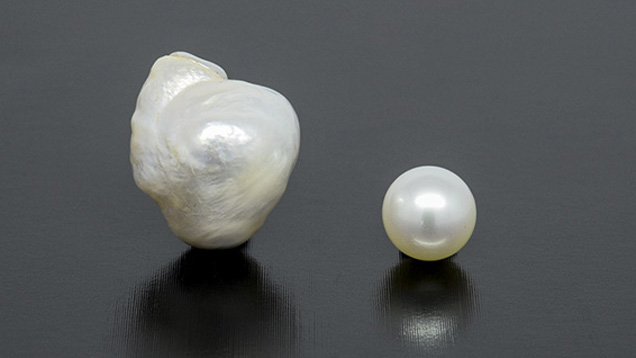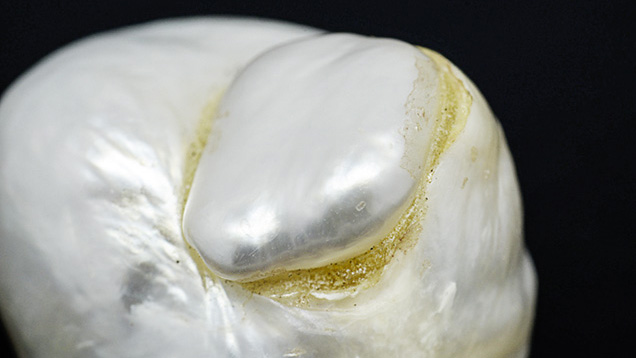Enormous South Sea Cultured Pearl Filled with Cultured Pearls


Figure 2. A small pearl was plugged into this opening in the baroque pearl. Photo by Jian Xin (Jae) Liao.
Microradiography revealed that this smaller pearl was a nonbead-cultured pearl with an irregular linear dark central growth feature (figure 3, left). Both pearls originated from a saltwater environment, according to energy dispersive X-ray fluorescence (EDXRF) spectroscopy. Surprisingly, microradiography revealed three additional bead-cultured pearls within the large baroque specimen (figure 3, right). These three cultured pearls showed their own distinct bead demarcations and had all been drilled through. The large void was filled with an unknown substance that prevented the three pearls from moving around.
Figure 3. The baroque pearl’s internal structure suggested a non-bead cultured pearl (left). X-radiography showed that three bead cultured pearls were used to fill the void (right). Photo by Surjit Dillon Wong.
Although we occasionally see filled or plugged pearls (see D. Hargett, “Unusually large worked and plugged cultured pearl,” Winter 1991 Lab Notes, p. 251), this was the first time we had encountered a South Sea cultured pearl filled with multiple bead-cultured pearls. We believe this enormous pearl was originally cultured with a single bead nucleus, but that somehow the bead emerged through an opening. To maintain the specimen’s weight and durability, the three bead-cultured pearls were used to fill the void and the opening was plugged with a smaller nonbead-cultured pearl.



